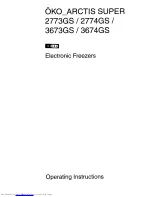
To check the operating level, proceed as follows:
1. Remove combined inlet shields.
2. Measure height from sump bottom to water level and compare with face value from table.
3. Check valve for leakage and replace valve, if necessary.
4. Check that float arm can move freely and that float ball floats and closes valve.
5. Ensure that make-up water supply is adequate.
BLOW DOWN
In case of a continuous blow down with a metering valve in the bleed line, ensure that the valve is unobstructed
and that blow down water can drain freely. Measure the blow down flow rate by recording the time needed to fill a
given volume.
For automatic blow down using conductivity control, ensure that the conductivity probe is clean and that the blow
down solenoid valve is operational. Unless you have a specific adjustment procedure, your water treatment
company should check and adjust set points.
SUMP HEATER PACKAGE
Sump heaters must only operate in the winter to prevent the sump water from freezing, when the water pump(s)
and the fan(s) are shut off.
Under no circumstances should sump heaters operate at other times as they could potentially heat the water to
temperature levels, which are favourable to bacteriological growth. Ensure every six months the heater thermostat
is properly set and clean. Also ensure that control and safety devices, such as low level cut out switches, are
operational, clean and properly incorporated into the control circuit.
CAUTION
Sump heaters can be hot.
DRIVE SYSTEM
Belt Driven Units
The drive system consists of a specially designed belt, a fan sheave and a motor sheave. The high efficiency belt
provides the premium quality necessary for evaporative cooling equipment service.
Together these components provide a highly reliable system with low maintenance requirements. The drive
system should be inspected periodically to check the belt tension, condition of the sheaves and belt, and when
necessary adjust the tension. The recommended service intervals are specified elsewhere.
•
Initial Start-up:
If the equipment was supplied in assembled major sections the drive has been tensioned and
aligned at the factory. Also in this case it is recommended to always check drive alignment and belt tensioning.
If equipment was supplied completely knocked-down (KD) then check drive alignment & belt tensioning as per
procedures outlined below.
•
Seasonal Start-Up:
Readjust the tension on the belt. Check condition of sheaves.
•
Operation:
After initial unit start-up or the installation of a new belt, the tension must be readjusted after the
first 24 hours of operation. Thereafter the condition of the belt should be checked monthly and the tension
adjusted as necessary, but at least once every 3 months.
W W W . B A L T I M O R E A I R C O I L . E U
18
















































